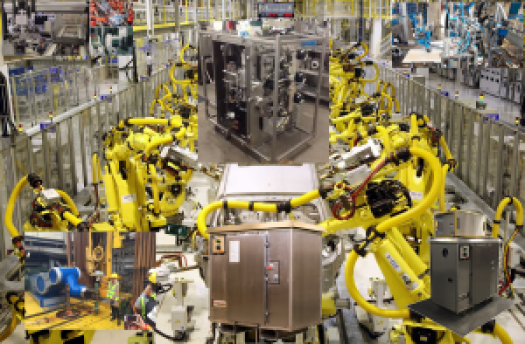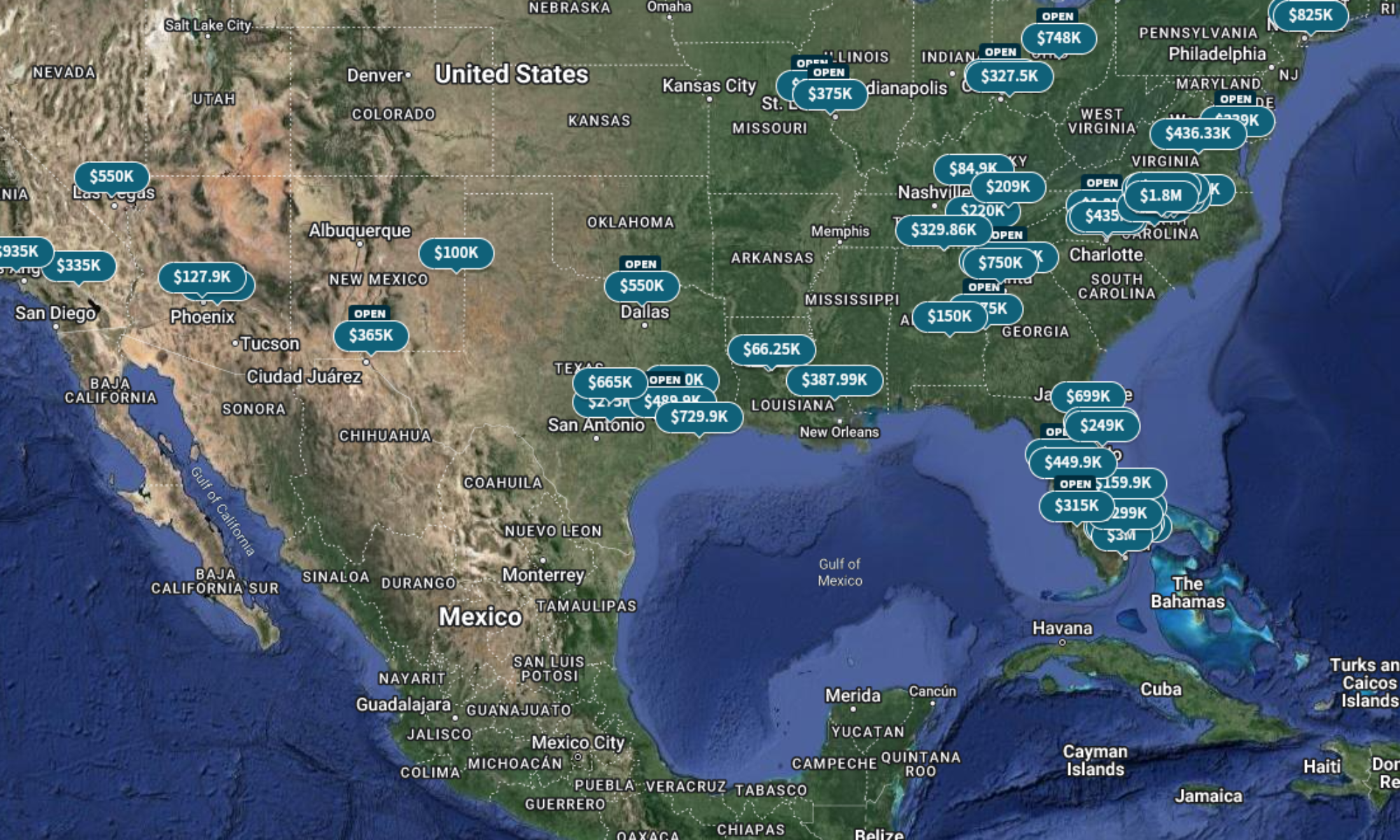 |
| Various pictures of industrial and oilfield automation. The bottom center, top center, and bottom right images are of the DRU. |
Today’s topic has to do with Equipment Automation, and more specifically, Drilling Fluids Equipment Automation.
First, a brief history of drilling technology:
- Early drilling systems used the equivalent of a heavy chisel hanging on a cable down in a hole to “drill” for oil. The “cable drill” would be raised and lowered rapidly to break the rock, thus deepening the hole.
- Later systems put a bit on the end of lengths of pipe and rotated the pipe to deepen the hole.
- Drilling fluids were introduced to cool & lubricate the bit and carry the cuttings out of the hole. They were consisting of water and other chemicals to maintain density and viscosity.
- Invert Emulsion Muds (IEM) were later developed to further inhibit interaction between the drilling fluids and the formation being drilled.
The main tools used to maintain the drilling fluids were a rheometer, a tool developed to test the viscosity of paints to ensure the pigment particles remained suspended, and the mud balance, a tool used to measure the density of a fluid.
***The above history does not contain all innovations, reasons, or details***
Up until 2015, the mud balance and the rheometer were still the two main tools used to monitor the properties of drilling fluids. They additionally use other tools, such as retorts to determine the fractional content of oil, water, and solids in a fluid, chemical titration to test things like alkalinity, calcium content, & chlorides content, in addition to HTHP filter press, a tool used to measure how much of the liquid portion of a drilling fluid will “leak out” through a porous medium, usually filter paper, across a standard differential pressure.
Prior to 2015, quite a few companies have worked on automating drilling fluids testing, including the company I work for, Baroid, a part of Halliburton.
**Disclaimer: I am part of the group that worked on this**
The testing covered varied from density meters to simulated viscosity to solids analysis. The main issue was that the results were either inaccurate or the specific test itself was not necessarily a must-have.
We initially built or had built various automated prototypes of testing apparatus. One was a fully automated retort. If you are not familiar with a retort, it is designed to bake the liquid out of a measured volume of fluid at a high enough temperature to also separate out oil and water content. This test allows drilling fluids engineers (or mud engineers) to determine how much oil, water, and solids are in a fluid. It also allows them to calculate the amount of high gravity solids (desired) and low gravity solids (not so desired) contained within the fluid. The approach the company we contracted for a prototype took was to just automate the manual process. So the result was a big box that took in a measured amount of fluid, cooked off the liquid, reheated the liquid to separate the oil and water, then used LASERS! to measure the amount of oil and water.
They had also included a mini-CNC arm inside the box, specifically for the cleanup part. It would pick up a “retort spatula” attachment to scrape the dried mud residue from inside the retort cell, then it would pick up the wire brush attachment to get the final bits of dried mud from the cell walls. There was a vacuum component that sucked up all of the dried mud residue and dust while the cleaning operation was going on. It was kind of amazing to watch!
Alas, as amazing as it was to watch, it was not practical as a field application precisely due to the amount of moving parts…there were way too many things to break down. Too many things needing hands-on attention during its operation. When a piece of equipment like this is sitting 100 miles offshore, that is too isolated to be able to send someone every couple of days to clean it out or fix something.
We realized that we needed to focus on the critical measurements for running drilling fluids. The properties measured on the most frequent basis are density and rheology. Additionally, as part of the automation strategy we developed, density, rheology, and fluid temperature are the primary inputs for our real time drilling and hydraulics simulator.
Our first unit was dubbed RTDV, Real Time Density & Viscosity. It was a good start, but was not able to provide us with accurate results. Based on extensive analysis of the RTDVs operation, we started a redesign project based on lessons learned. The biggest issues were lack of continuous unattended operation, inaccurate rheology readings, and the ability for air or gas entrainment to affect the density readings.
The next generation unit was named DRU or Density Rheology Unit. It captures a pressurized density, approximately every 1-2 minutes, and a full 6-speed rheology every 10-20 minutes, depending on ambient fluid temperatures because it heats the fluid to a set testing temperature.
It was deployed on late 2015 on a commercial basis and received industry press and awards on 2016.
Our goal is to automate all fluid testing. What’s funny is that when we say that, drilling fluids engineers ask if we are trying to get rid of their jobs. That is just short-sighted thinking.
As things currently stand, in a 24 hour period, just to accomplish the standard required tests, it takes about 6 hours. That’s a full 25% of the day spent in a lab, possibly not paying attention to operations. And that is for only four sets of test results.
Yes, there are opportunities to check on things while tests are running, BUT, What if the fluids engineers didn’t have too spend all that time conducting tests? And what if they could see those test results more frequently? How much better could they maintain the fluid properties?
There are other companies coming out with new technology and have the ability to measure a few properties, but I don’t think that they have the broad vision for an integrated suite of sensors in addition to a plan on what to do with the data once it is captured.
But I do.
But we do.
Look to the future…
Let me know what you think in the comments. Ask questions, tell your story.
If you like my posts, please share them with others and subscribe to this blog.
Discover more from The Clint Galliano
Subscribe to get the latest posts sent to your email.



It was a great team effort that benefited from innovational guidance!
I remember one of my favorite people (he can get testy when I publish his name) refer to this equipment as “Robo Mud Pimp”
Whoever helped you come up with that broad vision and strategy for integrated sensors and action on that data must have been one sharp SOB.
Thanks!
Amazing technology. It seems drilling fluids is quite late to hop onto the technology wagon.
Excited about future possibilities..and yes with less time spent testing fluids in the lab the drilling engineer has much more time to proactively treat the fluid system.
Great job guys!